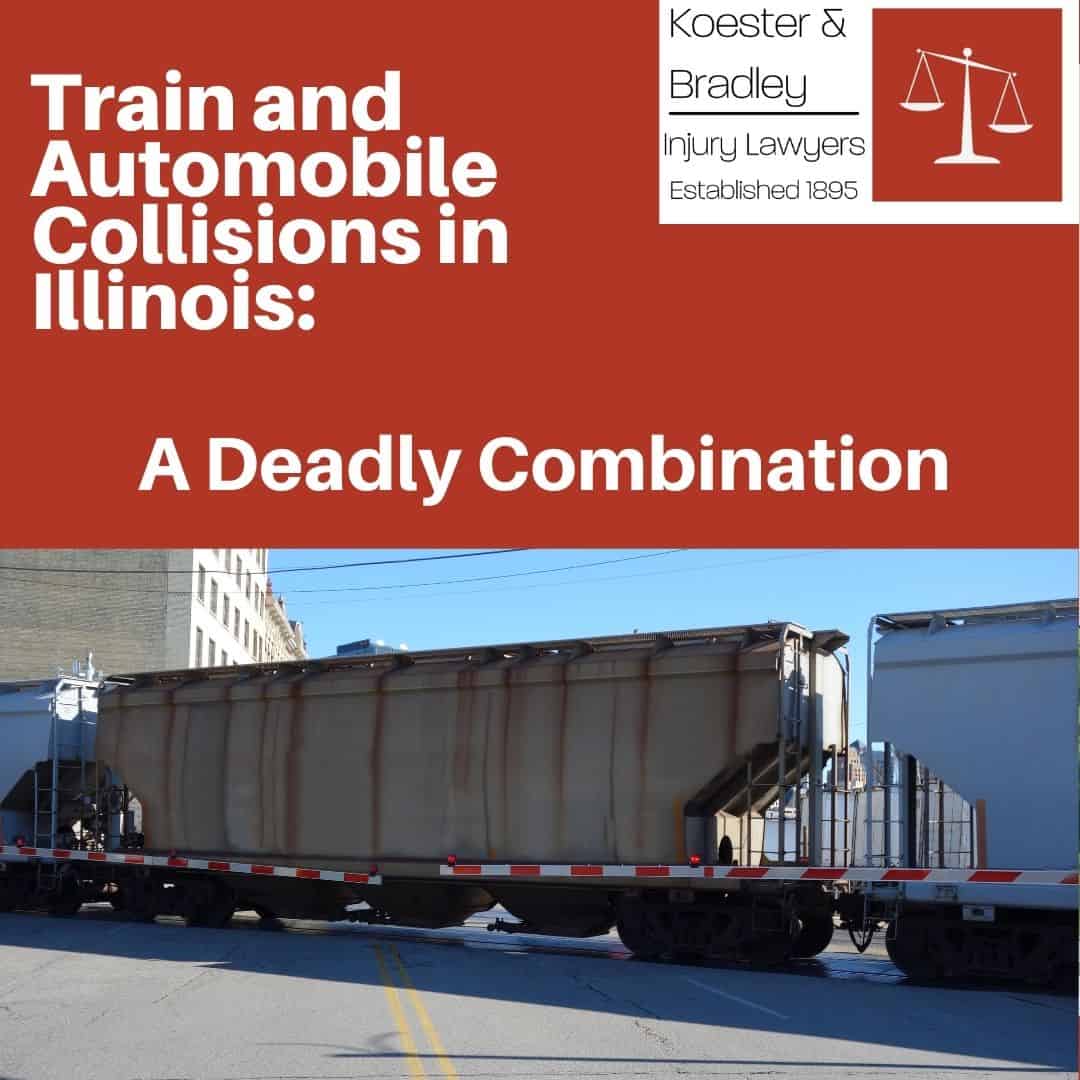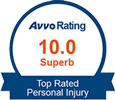- Free Personal Injury Consultation: (217) 337-1400 Tap to Call
Train and Automobile Collisions in Illinois: A Deadly Combination

It may be surprising to learn that accidents involving railroad track and crossings and automobiles and pedestrians are very frequent in Central Illinois. In fact Champaign Urbana has had a large number of injuries given the large amount of pedestrian traffic with the University of Illinois and large population base for downstate Illinois. The most common type of passenger railroad or freight trains accidents tend to be ones involving railroad crossings and cars as such as the major wreck in in the Chicago area in the summer of 2019 that caused an Amtrak train to derail. Often times these sorts of train and railroad accidents are referred to as Highway-Rail Collisions, and while the impact of these accidents is devastating, they can be easily avoided by undertaking certain simple steps.
Highway-Rail Collisions
Illinois has the second highest number of highway-rail crossings in the United States. Many of these are in rural areas with unmarked railroad crossings which is why there are a large number of accidents and fatalities in Central Illinois and Champaign Urbana. Of the 7,696 highway-rail grade crossing in Illinois, 773 of those are located on state roads and 6,923 are on local roads. There are also 2,673 highway-rail grade-separated (bridges). 3,791 grade crossings and 141 bridge structures in the state of Illinois are on private property, which are not under the jurisdiction of the state. Illinois is also home to 98 pedestrian grade separated crossings (bridges) and 346 pedestrian grade crossings.
By statute, the Illinois Commerce Commission (ICC) is responsible for the safety of public highway-rail crossings in Illinois. Costs of safety improvement are paid by the state, the railroads, and local governments. The Illinois Department of Transportation through the State Road Fund pays the majority of the costs for public highway-rail crossings located on state roads. Costs for public highway-rail crossings on local roads are handled by the Grade Crossing Protection Fund.
There were approximately 107 collisions at public railway crossing in Illinois in 2014. The majority of incidents involve trains colliding with cars. However, in 2014, 23 out of the 107 collisions involved a motor vehicle driving into the side of a train. 22 fatalities occurred in Illinois in 2014. 2 of those fatalities occurred in Champaign County which would be wrongful death cases should litigation ensue.
Illinois Highway-Rail Grade Crossing Collisions
| Type of Collision | Total Collisions | Fatal Collisions | Total Fatalities |
| Train Struck Vehicle | 67 | 7 | 11 |
| Vehicle Struck Train | 23 | 1 | 1 |
| Pedestrian | 17 | 10 | 10 |
| Total | 107 | 18 | 22 |
*statistics from ICC Crossing Safety Improvement Plan FY 2016-2020 Plan
According to the Federal Railroad Administration Office of Safety Analysis, 117 highway-rail incidents occurred in Illinois, resulting in 16 fatalities in 2015. 4 of those incidents including 1 fatality occurred in Champaign County. A highway-rail incident is defined as any impact between a rail and a highway user at a crossing site, regardless of severity. Incidents include motor vehicles and other highway/road/sidewalk users at both public and private crossings.
http://safetydata.fra.dot.gov/officeofsafety/publicsite/Query/AccidentByRegionStateCounty.aspx
http://safetydata.fra.dot.gov/officeofsafety/publicsite/Query/AccidentByRegionStateCounty.aspx
How Can You Easily Avoid Railroad Crossing Accidents?
Drivers can adhere to these common sense steps to avoid an accident with a train or train tracks–and hopefully avoid having to hire an accident attorney all together:
- In a race, the train always wins. Trains move faster than they appear, and even at lower speeds, any time a train, passenger or freight, collides with an automobile, the train wins. It goes without saying that if the train is actually crossing, you should wait for it to pass before crossing.
- Don’t “cheat” the lowered gates. It can be tempting to simply drive around lowered railroad crossing gates. Despite the fact that you may not actually see the train, closing speed can be very fast. This applies to situations when you find yourself waiting for an extended period of time at a crossing with no trains in sight. If the wait is unbearable, call the railroad 800 number to report the situation and find the closest functional crossing. The lost time is not worth losing your life.
- Come to a full stop at all crossings. Railroads are a constant fixture in the Central Illinois landscape. It may be tempting to blow through a railroad crossing , particularly if there is not a train in sight. Just remember, in a tie between a tran and a car, the train wins, and at over 60 miles per hour, the closing time is very fast. To avoid a collision, always come to a full stop at every crossing–even if a train is not present.
- If you get stuck on the tracks at a railroad crossing, just leave the car. After exiting the tracks, and the zone of danger, look for the 800 number posted at the crossing. After alerting the railroad, call 911 and tell the local first responders. Then stay away from the stranded car to avoid injury.
- Remember that a train’s stopping distance is very long. A freight train moving at 55 miles per hour may need up to a mile to stop. Couple this fact with the fact that visibility is not always miles, and you are left with a situation where you as the driver of the car are in the best positions to avoid the collision.
As always out personal injury team at Koester Law, PLLC is here to help you recovery for a train collision or railroad crossing case, or just answer any of your questions along the way.









